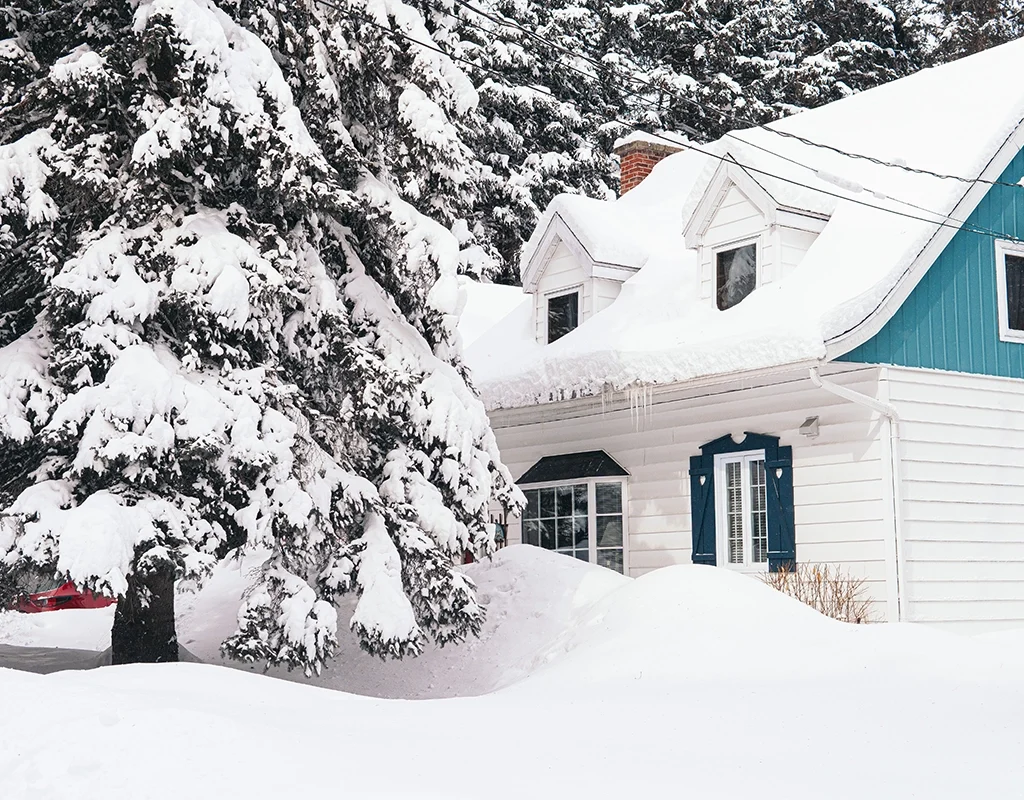Winter is one of the toughest seasons on your home, especially your roof. Snow, ice, and freezing temperatures can create a host of problems that lead to costly repairs if your roof isn’t properly prepared. Fortunately, taking a few preventative steps in the fall can protect your roof and home through the harshest winter months. Here are some key steps you should follow to get your roof ready for winter:
1. Inspect for Damage
Before winter arrives, conduct a thorough visual inspection of your roof. Look for missing, cracked, or loose shingles, as these weak points can lead to leaks once snow and ice accumulate. Pay attention to signs of wear and tear, such as curling or buckling shingles, which can allow moisture to seep in. Damaged shingles should be repaired or replaced immediately to prevent further damage during winter storms. Don’t forget to check the flashing around chimneys, vents, and skylights, as faulty flashing can lead to leaks as well.
2. Clean Gutters and Downspouts
Gutters and downspouts play a crucial role in directing water away from your roof and home. Clogged gutters can cause water to back up and freeze, leading to ice dams, which are ridges of ice that prevent melting snow from draining properly. Ice dams can cause significant damage to shingles, gutters, and even the interior of your home. To avoid this, thoroughly clean out your gutters and downspouts, removing any leaves, dirt, and debris. Ensuring proper drainage will help keep your roof clear of excess water and reduce the risk of ice dam formation.
3. Check Attic Insulation and Ventilation
Proper attic insulation and ventilation are essential for maintaining a healthy roof during winter. Without sufficient insulation, warm air from your home can rise into the attic and heat the roof, causing snow to melt unevenly and potentially leading to ice dams. Meanwhile, good ventilation allows cool air to flow through the attic, keeping the roof surface at a consistent temperature. This helps prevent excessive heat buildup and reduces the chances of condensation forming inside the attic, which can lead to mold growth and moisture damage. Inspect your attic’s insulation and make necessary upgrades to maintain the right balance of heat retention and airflow.
4. Trim Overhanging Branches
Snow and ice accumulation on tree branches can cause them to snap, potentially falling on your roof and causing serious damage. Branches scraping against the roof can also wear down shingles over time. Before winter, trim back any overhanging tree branches that could pose a risk to your roof. Keeping trees and vegetation away from your home not only reduces the risk of winter damage but also helps keep your gutters free of debris throughout the year.
5. Schedule a Professional Roof Inspection
While DIY inspections are helpful, a professional roofing contractor can spot issues you might overlook. A professional inspection will check for hidden problems such as leaks, structural weaknesses, and deteriorating materials that could worsen in winter. They’ll also check the integrity of your roof’s flashing and identify any areas vulnerable to ice dam formation or water intrusion. Scheduling a professional inspection before winter ensures that your roof is structurally sound and prepared to handle the stress of the cold season.
Taking these preventative measures can make a significant difference in how your roof withstands winter. From inspecting for damage to cleaning gutters and trimming branches, each step helps to protect your home from leaks, ice dams, and other winter-related issues. To ensure that your roof is fully prepared for the upcoming cold months, consider hiring a professional.
Call or email Capela’s Roofing Inc. at 905-528-9167 to schedule a comprehensive roof inspection and get peace of mind knowing your home is ready to face winter’s worst.

